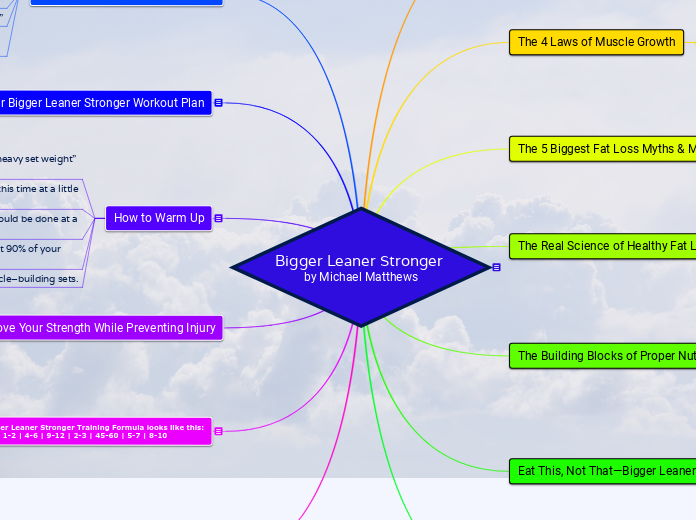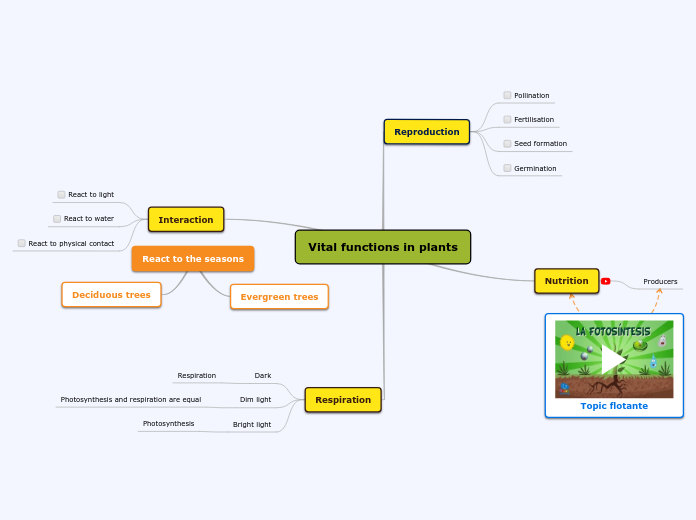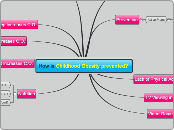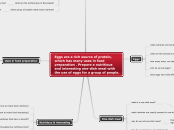Bigger Leaner Stronger
by Michael Matthews
According to Matthews, most personal trainers are a waste of time and money because they don’t know what they’re talking about.
Seventy to eighty percent of how you look is a reflection of how you eat.
Your Bigger Leaner Stronger Diet Plan
To gain significant amounts of muscle (ten pounds or more), bulk until you’ve gained the size you want, and then cut to lose the fat.
Matthew’s recommendation is to bulk to a size that’s a little bigger than what you want and then cut.
Here’s how to determine your starting point for bulking:
- Eat 1 gram of protein per pound of body weight per day.
- Eat 2 grams of carbs per pound of body weight per day.
- Eat 1 gram of healthy fat per 3 pounds of body weight per day.
“Some guys find that their bodies do better with fewer carbs and more fats. If you know or suspect this about your body, you can drop your carbs by 50 grams per day and increase your fats by about 20 grams per day to replace those calories.”
“Depending on whether you’re new to weightlifting or experienced, you’re expecting to gain anywhere from 0.5 to 2 pounds per week when bulking, with a minor, gradual increase in body fat.”
“If you aren’t gaining weight or strength or your energy levels are low after a couple of weeks of bulking, you should up your calories by about 300 per day for another week or two and see if that fixes it. The easiest way to add calories is to eat about 70 more grams of carbs per day.”
Adjust your calories up by about 200 for every fifteen pounds that you gain.
“Eat at least about 30% of your daily carbs in your post-workout meal. This is about 80–100 grams for most guys, but feel free to go higher you’d like.”
“As a general rule, try to get at least 50% of your daily protein from solid food. It makes a difference.”
Maintaining. When you adjust your diet to enable you to make slow muscle gains without the addition of any fat.
Cutting. When you adjust your diet and usually also add cardio to your training routine in order to maximize fat loss with the usual byproduct of minimal muscle growth.
Bulking. When you adjust your diet to maximize muscle gains with the usual byproduct of gaining some fat along the way.
The Bigger Leaner Stronger Training Formula looks like this:
1-2 | 4-6 | 9-12 | 2-3 | 45-60 | 5-7 | 8-10
For the first 6–9 months of being on this program, Matthew’s recommends that you try weeks of complete rest. If you definitely don’t like how your body feels after trying a few full rest weeks, or if you come back weaker, then try the “De–load Week.”
The rep timing Matthew’s recommends is known as a “2-1-2” timing. This means the first part of the rep should take about two seconds, then there should be a pause, followed by the final portion of the rep, which should take about two seconds.
If you’re bulking, Matthew’s recommend 2-3 days of cardio per week.
There are three primary ways that cardio can help you build (and retain) more muscle. They are as follows:
- It improves muscle recovery by increasing blood flow to muscles.
- It improves your body’s metabolic responses to food, helping you minimize fat storage.
- It keeps up your conditioning, making the transition from “bulking” to “cutting” easier on your body.
Take a week off training every 8-10 weeks
Train each muscle group once every 5-7 days
Train for 45-60 Minutes
Rest 2-3 minutes in between sets
Do 9-12 heavy sets per muscle group
Do sets of 4-6 reps for nearly all exercises
Train 1-2 muscle groups per day
How to Improve Your Strength While Preventing Injury
“A correct warm-up introduces blood into the muscle group being trained and its supporting muscles while progressively acclimating them to heavy weight, but it does NOT fatigue the muscles.”
How to Warm Up
The only exception to the above is the rare case of moving on to an exercise that involves muscles that would not have been warmed up, such as going from Lat Pulldowns to Deadlifts.
Your fifth, sixth and seventh sets are your heavy, muscle–building sets.
The fourth set is the final warm-up set, and it’s very simple: 1 rep with about 90% of your heavy weight. Then rest 2–3 minutes before starting your next sets.
In your third set is 4 reps with about 70% of your heavy weight, and it should be done at a moderate pace. Then rest for 1 minute.
In your second set, you use the same weight as the first and do 10 reps this time at a little faster pace. Then rest for 1 minute.
In your first warm-up set, you want to do 12 reps with about 50% of your “heavy set weight” and then you rest for 1minute.
Your Bigger Leaner Stronger Workout Plan
The Bigger Leaner Stronger Workout Plan calls for five days of weightlifting, as much cardio as you’d like to do based on your goals and what you now know, and two days of rest from the weights, and one day of complete rest (no exercise whatsoever).
3 day program
Matthews likes to change out an exercise or two from each workout every 8–10 weeks (after his De–load Week). He’ll then do that new routine for the next 8–10 weeks, take a week off, change up the exercises, and keep the pattern going.
Legs (warm-up and 9 working sets)
Shoulders (warm-up and 9 working sets)
Biceps (6 working sets, no warm-up needed)
Back (warm-up and 9 working sets)
Triceps (6 working sets, no warm-up needed)
Chest (warm-up and 9 working sets)
Recommended exercises from Matthews
Abs
- Cable Crunch
- Captain’s Chair Leg Raise
- Air Bicycles
- Ab Roller
- Decline Crunch
- Hanging Leg Raise
- Flat Bench Lying Leg Raise
Triceps
- Close–Grip Bench Press
- Seated Triceps Press
- Triceps Pushdown
- Lying Triceps Extension
- Weighted Dip
Bicep
- Barbell Curl
- Straight Bar Curl
- E–Z Bar Curl
- Dumbbell Curl
- Hammer Curl
Legs
- Barbell Squat
- Hack Squat
- Front Squat
- Leg Press
- Romanian Deadlift
- Leg Extension
- Leg Curl
- Calf Raise (standing or seated)
- Leg Press Calf Raise
Shoulders
- Seated Barbell Military Press
- Seated Dumbbell Press
- Arnold Dumbbell Press
- Dumbbell Front Raise
- Side Lateral Raise
- Bent-Over Rear Delt Raise
- Seated Rear Delt Raise
- Barbell Shrugs
Back
- Chest Dumbbell Press (flat, incline)
- Barbell Bench Press (flat, incline)
- Weighted Dip
- Back Barbell Deadlift Pull–Up (weighted if possible)
- One-Arm Dumbbell Row
- T–Bar Row
- Bent-Over Barbell Row
- Front Lat Pulldown
- Close–Grip Pulldown
- Seated Cable Row (wide– and close–grip)
5 day workout plan
Day 5
Captain’s Chair Leg Raise: 3 sets Air Bicycles – 3 sets
Cable Crunch: 3 sets
Barbell Curl: 3 working sets Seated Triceps Press – 3 working sets
Triceps Pushdown: Warm–up sets and then 3 working sets
Arms and Abs Alternating Dumbbell Curl: Warm–up sets and then 3 working sets
Day 4
Romanian Deadlift: 3 working sets
Leg Press: 3 working sets
Legs Barbell Squat: Warm-up sets and then 3 working sets
Day 3
Barbell Shrugs: 3 working sets
Bent-Over Rear Delt Raise: 3 working sets
Side Lateral Raise: 3 working sets
Shoulders Seated Barbell Military Press: Warm-up sets and then 3 working sets
Day 2
Seated or Standing Calf Raise: 6 sets (enough weight to allow 10–12 reps per set)
Close–Grip Lat Pulldown: 3 working sets
One–Arm Dumbbell Row: 3 working sets
Back and Calves Barbell Deadlift: Warm-up sets and then 3 working sets
Day 1
Air Bicycles (no weight, as many as you can do): 3 sets
Cable Crunch: 3 sets (enough weight to allow 10–12 reps per set) Captain’s Chair Leg Raise (no weight, as many as you can do): 3 sets
Dip (Chest Variation, weighted if possible): 3 working sets (4–6 reps per set)
Incline Bench Press: 3 working sets (4–6 reps per set)
Chest and Abs Flat Bench Press: Warm-up sets and then 3 working sets (4–6 reps per set)
The No-BS Guide to Supplements
“Whey concentrate is the least processed form and cheapest to manufacture, and it contains some fat and lactose.”
“The three forms of whey protein sold are whey concentrate, isolate, and hydrolysate.”
“Whey is particularly effective when eaten after training, due to its rapid digestion and abundance of leucine.”
“Unless you are in the lucky position of being able to have whole food meals ready 4–6 times per day, you’re going to need to use protein supplements.”
“Most everything you see in the world of workout supplements is utterly worthless.”
How to Plan Your Meals to Maximize Your Gains
When bulking, two or three cheat meals per week is totally fine.
Matthew’s likes egg protein powder or 0% fat Greek yogurt or low–fat cottage cheese for his pre-sleep protein, but casein is another common choice.
“It’s important to eat within an hour or so of finishing your weight training, and to eat a substantial amount of carbs, and a moderate amount of protein. For most guys, this means about 80 grams of medium–to–high–GI carbs, and 30-40 grams of protein.”
“About 30 minutes before training, you want to eat about 30 grams of high-GI carbs and about 30 grams of fast-digesting protein (such as whey).”
Eat This, Not That—Bigger Leaner Stronger Version
Examples of tasty, healthy carbs that you can include in your diet:
“Keep your intake of saturated fats relatively low (below 10% of your total calories). Saturated fat is found in foods like meat, dairy, eggs, coconut oil, bacon fat, and lard. If a fat is solid at room temperature, it’s a saturated fat.”
“Completely avoid trans fats, which are the worst type of dietary fat. Trans fats are found in processed foods, such as cookies, cakes, fries, and donuts. Any food that contains ‘hydrogenated oil’ or ‘partially hydrogenated oil’ likely contains trans fats, so just don’t eat it.”
Get much of your fats from unsaturated sources such as olive oil, nuts, peanut oil, avocados, flaxseed oil, safflower oil, sesame oil, or cottonseed oil. If a fat is liquid at room temperature, it’s an unsaturated fat.
Oranges
Oatmeal
Blackberries
Strawberries
Almonds
Peanuts
Black beans
Yam
Apple
Brown rice
Basmati rice
Whole grain sourdough bread
Multi-grain muffin
Multi-grain bread
In order to meet your daily protein requirements, here are your choices:
Eat carbs in the medium-high range of the glycemic index (70–90 is a good rule of thumb) about 30 minutes before you train and within 30 minutes of finishing your workout.
Matthew’s favorite pre- and post-workout carbs are bananas and rice milk, but other good choices are unprocessed foods on the high-GI list above, such as baked potato, white rice, instant oatmeal, and fruits that are above 60 on the glycemic index, such as cantaloupe, pineapple, watermelon, dates, apricots, and figs.
All other carbs you eat should be in the middle or low end of the glycemic index (60 and below is a good rule of thumb).
High-quality plant-based protein supplements
Egg Whey Casein
Protein Supplements
Vegetarian sources
Eggs
Fish
Whole Food Proteins Lean meats (beef, pork, chicken, and turkey)
There are two main sources of protein:
Whole food protein is protein that comes from natural food sources, such as beef, chicken, fish, etc. The best forms of whole food protein are chicken, turkey, lean red meat, fish, eggs, and milk. Protein from meat is particularly helpful when you’re weightlifting.
“Meat” doesn’t only mean red meat. Fish, chicken, turkey, pork, buffalo, and so on all qualify as “meat.” Matthew’s recommends that you stick to the lean varieties of meats as eating a lot of saturated fat just isn’t necessary.
That means fish, extra-lean cuts of beef (95% lean ground beef, or extra-lean cuts like top sirloin steak, and top and bottom round roast and steak), chicken, turkey, pork tenderloin, and so forth.
Supplement protein
Whole food protein
The Building Blocks of Proper Nutrition
There are seven aspects of nutrition that are of primary concern when trying to build muscle and lose fat.
Protein, carbohydrates, and fats are known as “macronutrients” and how you structure these in your diet is vitally important to your overall results.
Vitamins and minerals, which are known as “micronutrients,” are essential for the body’s performance of many different physiological processes connected with building muscle and losing fat.
A gram of protein is 4 calories, as is a gram of carbohydrate. A gram of fat is 9 calories.
A GI rating of 55 and under is considered “low GI” and 56 to 69 is medium, and 70 and above is high on the index.
Minerals
Vitamins
Water
Fats
Carbohydrates
Protein
Calories
The Real Science of Healthy Fat Loss
Use Cardio to Help Burn Fat
Eat on a Schedule That Works Best for You
Eat Less Than You Expend = Lose Weight
The 5 Biggest Fat Loss Myths & Mistakes
Spot Reduction
Doing Low Weight and High Reps Gets You Toned
Chasing the Fads
Do Cardio = Lose Weight
Counting Calories is Unnecessary
The 4 Laws of Muscle Growth
Muscles Grow Only if They’re Properly Fed
Muscles Grow Outside the Gym
Muscles Grow from Overload, Not Fatigue or “Pump”
Muscles Grow Only if They’re Forced to
The 6 Biggest Muscle Building Myths & Mistakes
“If you don’t eat enough calories and get enough protein, carbs, and fats throughout the day, you simply don’t grow.”
“By lifting weights, you are actually causing tiny tears (known as ‘micro-tears’) in the muscle fibers. which the body then repairs, adapting the muscles to better handle the stimulus that caused the damage. This is the process by which muscles grow (scientifically termed hypertrophy).”
“For optimal muscle growth, you must lift in such a way that causes optimal micro-tearing and then you must feed your body what it needs to grow and give it the proper amount of rest.”
“Building muscle and getting stronger requires lifting heavy weights, and doing short, intense sets of relatively low reps. This type of training causes optimal micro-tearing for strength and growth gains, and forces the body to adapt.”
“Studies have shown that, depending on the intensity of your training and your level of fitness, it takes the body 2–5 days to fully repair muscles subjected to weight training.”
“The amount of sleep that you get plays a crucial role in gaining muscle.”
“You could do the perfect workouts and give your muscles the perfect amount of rest, but if you don’t eat correctly, you won’t grow—period.”
Matthew’s rule of thumb is to lift hard, lift heavy, get sufficient rest, and feed your body correctly.
Eating to Stay Small or Get Fat
Lifting Like a Wussy
Lifting Like an Idiot
Wasting Time with the Wrong Exercises
You Have to “Feel the Burn” to Grow
More Sets = More Growth









